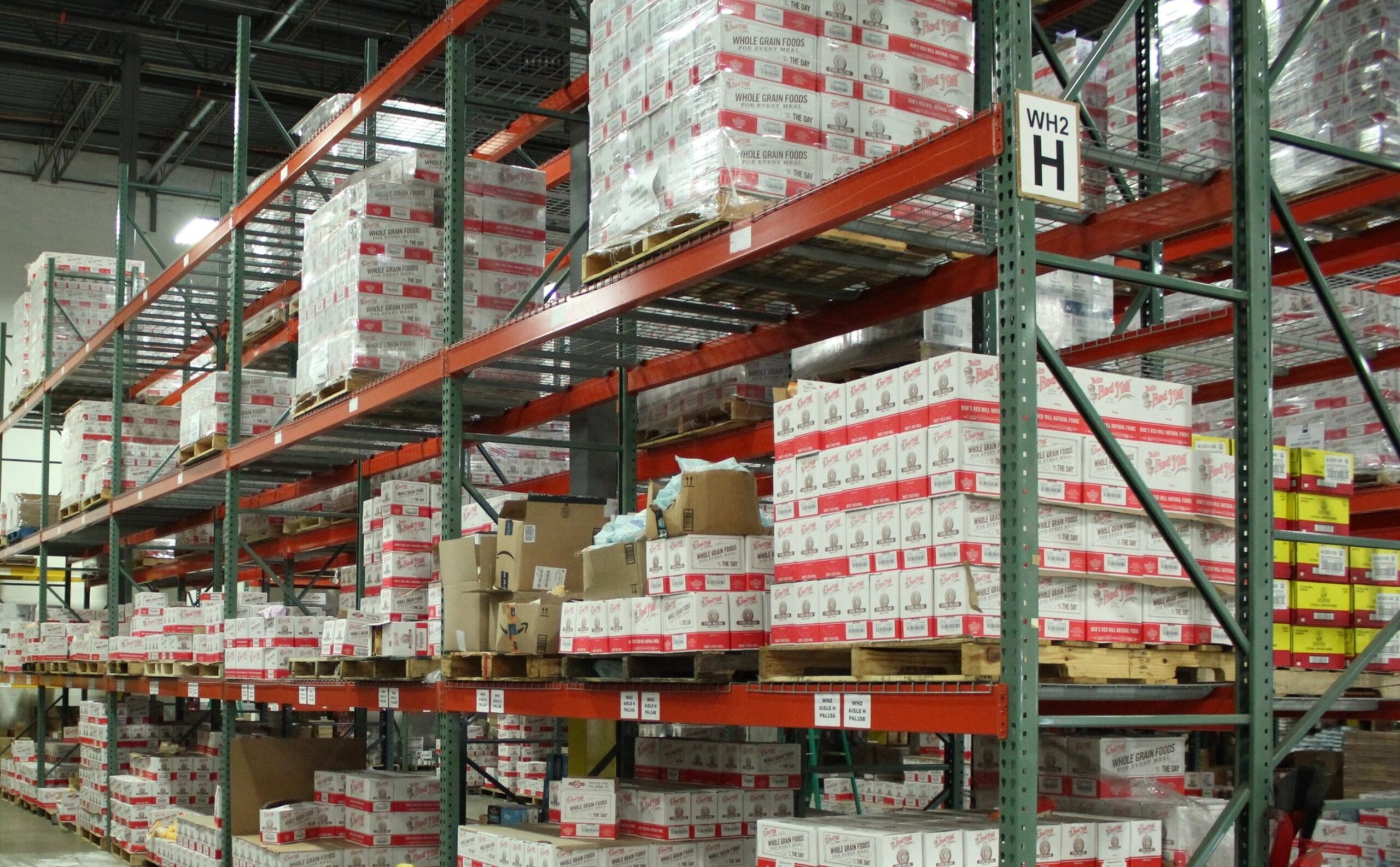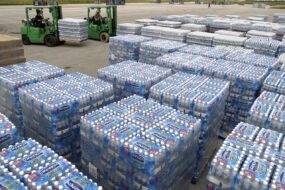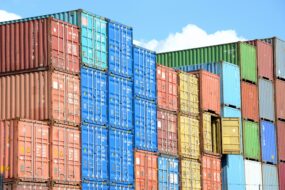Contents

If you’re involved in the logistics industry, you’ve probably heard the term “FAK” or Freight of All Kinds. FAK refers to a pricing system used in Less Than Truckload (LTL) shipping that allows a shipper and carrier to move multiple classes of products or freight under 1 class.
A class is determined by The National Motor Freight Traffic Association which has assigned a class (Class 50, Class 55, etc.) for a range of weight per cubic foot of a product or group of products. For instance, Class 50 is for any freight that is greater than 50 lbs per cubic foot. To find the weight per cubic foot for a product, you can use this formula Weight per cubic foot = weight / (length x width x height).
As an ex-consultant who’s taken millions of dollars of LTL spend for shippers to market, learning how FAK pricing is determined and the nuances can be very confusing. Understanding FAK classes and pricing is essential for anyone involved in shipping, especially for businesses that regularly move freight. This blog post will provide an overview of FAK classes, how they affect LTL pricing, and offer tips for saving money on shipping costs.
Why were FAK Classes Created?
The NMFTA (National Motor Freight Traffic Association), a non-profit organization, created Freight All Kinds (FAK) classes to simplify the process of pricing and billing for freight transportation services. Prior to the establishment of FAK classes, carriers, and shippers negotiated rates and charges for individual items over multiple shipments, which could be time-consuming and complicated.
The NMFTA came up with the system below where a class is determined for ‘Freight of All Kinds’ through multiple shipments.
NMFA FAK Classes
| Class | Cost | Notes, Examples | Weight Per Cubic Foot |
| Class 50 – Clean Freight | Lowest Cost | Fits on a standard shrink-wrapped 4X4 pallet, very durable | over 50 lbs |
| Class 55 | Bricks, cement, mortar, hardwood flooring | 35-50 pounds | |
| Class 60 | Car accessories & car parts | 30-35 pounds | |
| Class 65 | Car accessories & car parts, bottled beverages, books in boxes | 22.5-30 pounds | |
| Class 70 | Car accessories & car parts, food items, automobile engines | 15 to 22.5 pounds | |
| Class 77.5 | Tires, bathroom fixtures | 13.5 to 15 pounds | |
| Class 85 | Crated machinery, cast iron stoves | 12-13.5 pounds | |
| Class 92.5 | Computers, monitors, refrigerators | 10.5-12 pounds | |
| Class 100 | boat covers, car covers, canvas, wine cases, caskets | 9-10.5 pounds | |
| Class 110 | cabinets, framed artwork, table saw | 8-9 pounds | |
| Class 125 | Small Household appliances | 7-8 pounds | |
| Class 150 | Auto sheet metal parts, bookcases, | 6-7 pounds | |
| Class 175 | Clothing, couches stuffed furniture | 5-6 pounds | |
| Class 200 | Auto sheet metal parts, aircraft parts, aluminum table, packaged mattresses, | 4-5 pounds | |
| Class 250 | Bamboo furniture, mattress and box spring, plasma TV | 3-4 pounds | |
| Class 300 | wood cabinets, tables, chairs set up, model boats | 2-3 pounds | |
| Class 400 | Deer antlers | 1-2 pounds | |
| Class 500 – Dirty Freight | Highest Cost | Bags of gold dust, ping pong balls | Less than 1 lb |
How FAK Classes Affect LTL Pricing
FAK classes are more expensive the higher up in the class system you go since they are less dense in weight, which means that it steals space in an LTL carrier’s trailer from other freight that could be put on it. There are other considerations about FAK classes that affect pricing besides class alone. For ‘fluffier freight’ which are high classes like Class 250 and above, this freight can be oddly shaped or less dense. Therefore, some larger freight may be charged an over-dimension fee for ‘fluffier’ or ‘dirtier’ freight.
An Example of Calculating FAK Classes
Calculating the FAK class of a shipment is a straightforward process. First, determine the weight and dimensions of the shipment. Then, calculate the volume of the shipment by multiplying the length, width, and height. Finally, divide the weight of the shipment by its volume to get the density. The density is then used to determine the FAK class.
For example, if a shipment weighs 1000 pounds and has dimensions of 4ft x 4ft x 4ft, the volume would be 64 cubic feet. Dividing 1000 pounds by 64 cubic feet gives a density of 15.6, which would fall under FAK class 125.
Common FAK Class Items
A wide range of items can fall under FAK classes, including electronics, clothing, furniture, and more. Generally, items that are lightweight and take up a lot of space will fall under higher FAK classes.
For example, a shipment of pillows may have a low weight but take up a lot of space, making it fall under a higher FAK class. Similarly, a shipment of electronics may have a higher value and require special handling, making it fall under a higher FAK class as well.
It’s important to properly classify items for FAK classes to avoid unexpected costs and delays in shipping. If a shipment is misclassified, it may result in additional charges or even fines.
Tips for Saving Money on LTL Shipping with FAK Classes
There are several strategies that shippers can use to save money on LTL shipping costs. One of the most effective ways is to negotiate FAK class pricing with carriers. By understanding the FAK classes and how they affect pricing, shippers can negotiate better rates and reduce shipping costs.
Another way to reduce shipping costs is to optimize shipment packaging. By reducing the size of the shipment and making sure it’s packed efficiently, shippers can avoid higher FAK classes and save money on shipping costs.
Lastly, accurately classifying items for FAK classes is essential for saving money on shipping costs. Misclassifying items can result in unexpected charges or delays in shipping, which can increase costs. Therefore, shippers should take the time to properly classify items and avoid mistakes.
How FAK Classes on The Go in an Operation
Dimensionizers are devices used to accurately measure the dimensions of LTL (less-than-truckload) freight and are used in operations that are mixing and matching freight for many shipments per day. These devices typically use laser or infrared technology to quickly and accurately scan the freight and provide its length, width, and height measurements.
Some common types of dimensionizers for LTL freight include:
- Static Dimensionizers – Stationary devices can be installed in a warehouse or loading dock. The freight is placed on a platform and the dimensionizer uses lasers or infrared technology to scan the dimensions of the freight.
- Mobile Dimensionizers – These are portable devices that can be moved around a warehouse or loading dock. They are often used for irregularly shaped or oversized freight that is difficult to move to a stationary dimensionizer.
- Handheld Dimensionizers – The other option are small, handheld devices that can be carried by a worker and used to scan the dimensions of small or irregularly shaped freight.
Using dimensionizers for LTL freight can help shippers and carriers accurately determine the size and weight of their shipments, which is important for pricing, capacity planning, and regulatory compliance.




